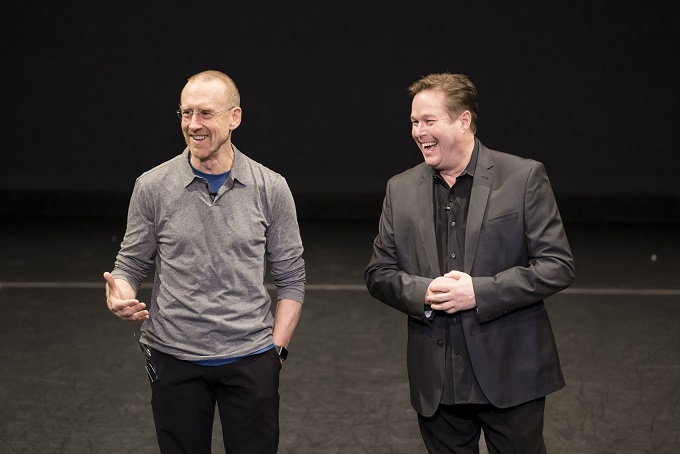Of all the classical arts, it may seem that ballet is the one that changes the least. The Sleeping Beauty, Cinderella, and above all, The Nutcracker are timeless classics, which means that the way they looked a generation ago is the way they look today.
Right? Wrong. Especially if you’re a fan of Boston Ballet.
Ballet, like all art forms, is in a constant state of change, because in every generation, there are choreographers and dancers who transform the entire industry.
Until the middle of the 20th century, the choreographer reigned supreme. They were the sole creative artists and the dancers were merely interpretative artists – meaning that whatever the choreographer told them to do, they did.
And then came George Balanchine, who actually took an interest in what the dancers wanted to do; a revolutionary concept in the dance world.
“Balanchine would let the dancers inspire him in the studio,” says Mikko Nissinen, Boston Ballet’s Artistic Director. “It was not that he only went and taught what he had figured out. It was very much about a process of working with the dancers, and how different dancers inspired him to do different things. Balanchine was ahead of his time with that approach.”
And then came Rudolf Nureyev.
“Oh, how people loved to hate him,” Nissinen laughs. “And before long, he changed everything. Everybody in the ballet world went in the direction he took, and he was beloved.”
In today’s ballet world, joining the ranks of great choreographers is an American who first found acclaim in Europe and now has a long-term partnership with Boston Ballet.
His name is William Forsythe, and he is driving a new revolution in ballet, showing dancers and audiences alike that we have to discard anything we’ve ever believed about limitations on the way the human body can move.
“Lots of his choreography takes place really off-balance,” Nissinen says. “They are pulling from each other and leaning, and trying to create difficult angles. For example, a ballerina might do a passé and she’s in a state of balance. Now let’s tilt that body 30 percent to one direction and give her a guy’s hand to pull. And she still looks like she’s in balance, but she’s way off balance. No one’s ever done that before.”
Forsythe is making ballet dancers move in ways that they’ve never moved before, but he’s also looking to them for their contributions.
“Forsythe puts people at ease,” says Nissinen. “He knows what he wants, but then he’s also really using the dancer as a collaborative voice in the process.”
That’s where today’s ballet revolution begins—in the studio rehearsing with Forsythe, where the dancers aren’t just interpreters, they’re co-creators with the choreographer. The dancers perform the moves that they have co-designed with Forsythe. The audience sees the pieces and realizes that something new and different is unfolding before them. “It’s like listening to David Bowie or Miles Davis back in the day,” says Nissinen. “Certain artists rewrite all the rules and they change the way we perceive their art. Forsythe is that individual in ballet in our times.”
What advice does Nissinen offer audiences new to Forsythe’s work?
“Enjoy the ride,” he laughs. “And there’s quite a ride to be had with these works. See where they take you. The worst thing is when people are rigid, and what they see doesn’t fit into what they envisioned as ballet. It’s better if you can say, ‘Wow, I never knew people could move like that. I never knew they could be so off-balance and yet still be in control of their bodies.’ His work increases the ante, and it increases the intensity, and hopefully also the excitement. It’s not modern dance, incidentally. It really is classical ballet. And it’s just handled differently, with more tension, speed, extremes, and that’s what makes it interesting. You need these individuals to push things forward. Things don’t go forward by themselves. So that’s why individuals from Balanchine to Martha Graham, Rudolf Nureyev to Baryshnikov have changed ballet. And now thanks to Forsythe, the art form is new all over again.”


